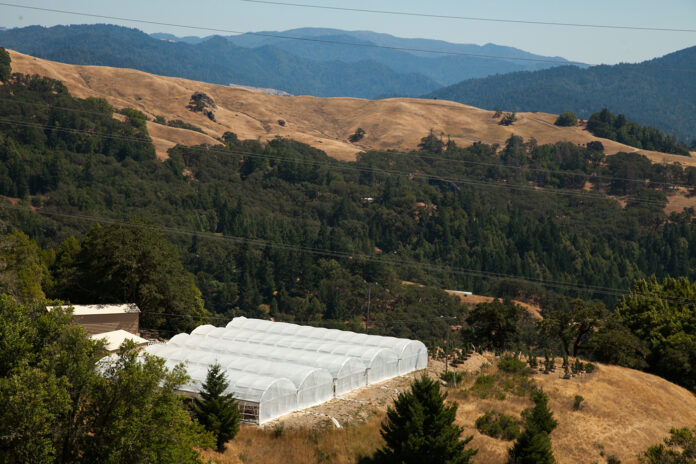The specific location of a product’s origin is more important with some products than others. Wine is the classic example, as the soil and surrounding climate in which grapes are grown can exert a profound influence on the nature and quality of the end product. A designation such as “Russian River Valley” in Sonoma, therefore, does more than just stroke the vanity of the given region. It also sets and helps to preserve customers’ expectations regarding a product’s location-related qualities and characteristics. Thus, a regional appellation functions similarly to a trademark—albeit one used by multiple different producers.
Cannabis cultivators long have argued a specific growing region similarly affects the characteristics of cannabis products, and in a 2016 bill, the California state legislature directed the California Department of Food and Agriculture (CDFA) to establish a similar Cannabis Appellation Program (CAP) for cannabis growing regions in the state. The CAP will allow regional groups of cannabis cultivators to apply for the establishment of a regional appellation that would identify the origin and source of their products and limit the use of that appellation to certain producers whose products meet specific requirements. Such appellations will allow cannabis produced in well-known regions, such as Humboldt, to command a higher price than that grown in other areas. This is particularly important in the cannabis industry, where producers often are restricted under federal law and therefore are less likely to qualify for a federal trademark registration than their peers in the wine industry. For such producers, the ability to distinguish themselves and their neighbors from competitors through appellation and similar programs has outsized importance for their business and marketing strategy.
In addition to bolstering the market for cannabis products from particular regions and providing consumers the ability to distinguish between products cultivated in a particular locale, the CAP creates an incentive for growers in a particular region to work together to promote their products, establish regional credentials, and maintain a minimum quality standard. With these goals in mind, the CDFA published its first iteration of the CAP guidelines in February 2020. The guidelines set forth a proposed framework by which licensed cannabis cultivators could create their regional appellations.
Among other things, the February 2020 regulations established the following elements of the CAP.
Petition fees
A $20,880 fee to establish an appellation of origin (since modified to a $14,250 proposal fee accompanied by a $2,850 petition submission fee) and a $10,440 fee to amend an existing appellation (since modified to a $7,125 proposal fee accompanied by a $1,425 petition submission fee). The CDFA will not begin to review any petitions until these fees are paid in full. Thus, cannabis cultivators seeking to establish regional appellations will need to invest upfront and develop financial and business relationships with fellow cultivators in their regions.
Collaboration among businesses
Each petition must be completed by a group of at least three unique, licensed cultivators within the proposed region (which the CAP defines as a “petitioning organization,” whether or not a formal “organization” exists). This means the proposed regulations put an emphasis on collaboration between different cannabis businesses because one business with three different licenses cannot file a petition alone. According to the CDFA, greater consensus-building in a proposed cannabis appellation of origin is critical to avoid creating appellations with overly specific or burdensome requirements or that favor a particular cultivator over others.
Contents of petition
The proposed regulations set forth a vast amount of information, detailed in ten specific categories, that must be included in each petition. Among other things, petitioners must provide:
- A general description and location of proposed geographical area, which may include information such as total acreage of the area, total canopy acreage currently occupied under licensed commercial cultivation, estimated canopy acreage eligible to use proposed appellation of origin, and any other information to place the appellation in context.
- A description of the boundary for the proposed appellation of origin and United States Geological Survey topographical maps depicting the boundary.
- A description of each distinctive geographical feature affecting cannabis cultivation in the area, including substantial evidence the geographical area is distinct compared to other areas that produce cannabis. In addition, at least one specific standard, practice, or cultivar must be identified, which acts to preserve the distinctiveness of the area.
- Identification and definition of all standard, practice, and cultivar requirements.
- A description and evidence of the legacy, history, and economic importance of cannabis cultivation in the area.
- A list of the cultivator license types issued by the CDFA (such as Indoor, Mixed-light Tier 1, Mixed-light Tier 2, or Outdoor) that are prohibited from using the appellation of origin.
Panel review process
Each completed petition will be reviewed by a seven-person petition review panel, which will provide a recommendation to the CDFA. Members of the petition review panel must be California residents with relevant experience in cannabis cultivation, intellectual property, sustainable agriculture, or community-based research.
Notice of use and record-keeping
A licensed cultivator is required to submit a “notice of use” to the CDFA within thirty days of using its appellation of origin. Thereafter, licensed cultivators are required to maintain records for at least seven years demonstrating cannabis was produced in the geographical area of the appellation of origin in accordance with applicable standards, practices, and cultivar requirements.
In September 2020, California State Senate Bill 67 updated the CAP in a few key ways. First, unlike the original CAP, SB 67 expanded the definition of a geographic region to allow for more nuanced geographic designations. While the statute previously allowed designation of a “county of origin,” the new bill made it possible for cultivators to designate a “county, city, or city and county of origin.” For example, certain cannabis cultivators not only could create an appellation to identify their product as being from Humboldt County, but also potentially could identify their product as being from Eureka (a city within Humboldt County) and work to develop greater cachet for producers from that city.
Second, SB 67 allows cultivators to use a particular designation only if 100 percent of the cannabis is produced within the designated region. Specifically, the legislation states cannabis is produced within a designated region only if all cultivation (including planting, growing, harvesting, drying, curing, grading, and trimming), starting from the time the cannabis plants were taller or wider than eighteen inches, was conducted within the appellation boundary and according to the appellation’s standard and cultivar requirements.
Third, the bill prohibits cannabis cultivators from falsely promoting cannabis products as having been produced in a particular region (or using any marketing or advertising that is likely to mislead consumers about the type of cannabis it contains, whether or not the cultivator makes any explicit statements about its origin). The statute applies these rules not just to the packaging of cannabis products, but also to marketing and advertising the products. (The rule specifically exempts any trademark registered with the California Secretary of State or U.S. Patent and Trademark Office prior to February 21, 2020.)
Fourth, SB 67 expressly excludes from the appellation program cannabis products grown indoors (such as in a greenhouse) or using certain practices such as the application of artificial light. Thus, those promoting their product using a regional appellation will need to ensure their practices conform to more “natural” requirements in order for the appellation to apply.
Since SB 67 went into effect, the CDFA has continued to move forward with implementing the CAP, and on March 5, 2021, the department released several additional proposed regulatory modifications. Most of these modifications are relatively minor: adjusting the method by which cultivators must submit their petitions, defining specific penalties for violations, and addressing procedural elements of the program.
While it is possible we may see additional regulations or amendments before implementation is finalized, cultivators interested in a regional appellation would be wise to begin working now, along with other cultivators and stakeholders within their region, to establish a record of the appellation’s use and to begin planning their petitions.













